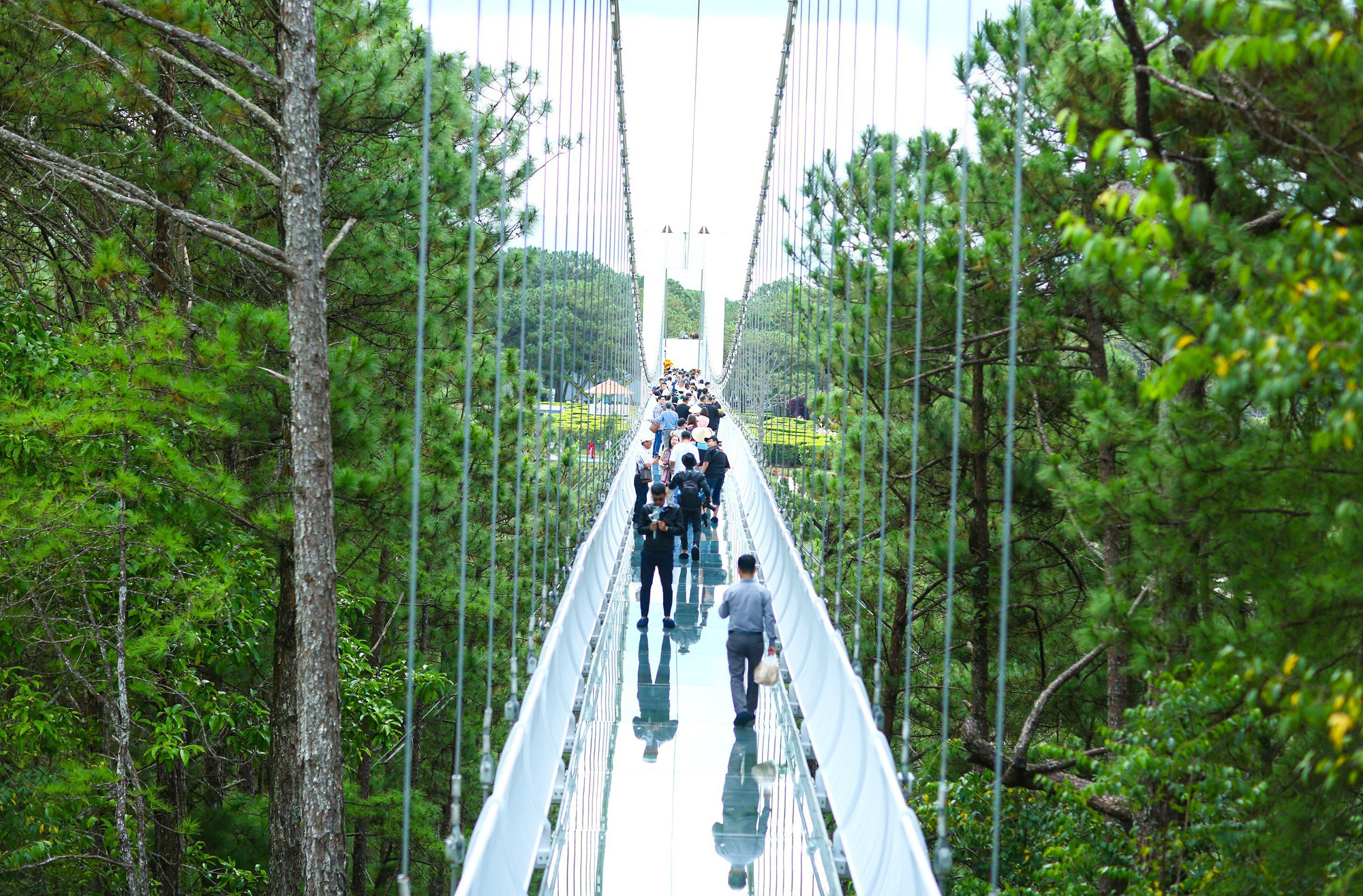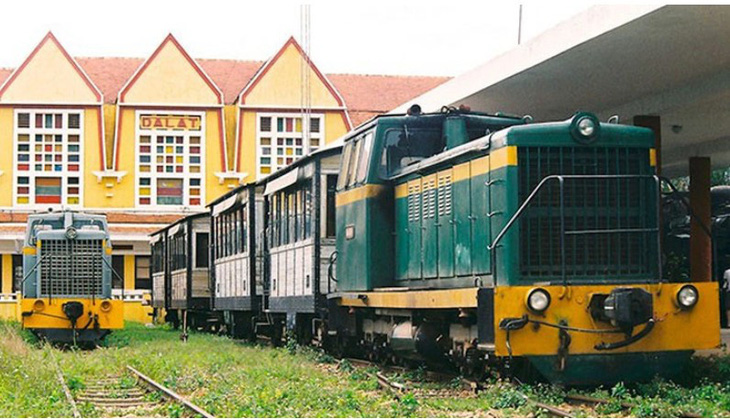By combining the route of memories and the road of happiness, Dalat can position itself as a multidimensional ...
By combining the route of memories and the road of happiness, Dalat can position itself as a multidimensional tourist destination, not only a place to reminisce and enjoy historical value, but also a place that brings joy and happiness.
 Glass-bottomed bridge connecting Love Valley to Dream Hill - Photo: MAI VINH
Glass-bottomed bridge connecting Love Valley to Dream Hill - Photo: MAI VINH
In the past, the K'ho people – the original inhabitants of this land – witnessed the ups and downs of history as people rushed to find the perfect destination to settle and develop in Dalat.
In the late 19th century, the French saw the potential of this land from the rolling pine forests. They have made Dalat a seaside resort hidden under unspoilt nature, and an important supplier of fruit and vegetables to the French of Cochinchina.
Today, the charming beauty of Dalat is not only a place of relaxation for visitors, but also an abundant source of inspiration for lovers of poetry and art. The harmony between the cool climate, fresh air, and romantic highland painting is the factor that attracts visitors to relax and enjoy the natural space here.
In addition, there are many views that Da Lat has undergone many significant changes, including changes in climate, landscape and architecture.
Projects have flocked to Da Lat but have not really respected the heritage that this place has inherited through the development process in the past. The rapid development of agriculture is ecologically transformative, but fortunately retains the appearance of an agricultural town.
With a land rich in history, people, and above all, containing a simple and rustic beauty of nature given by mother earth, have we now exploited and used it effectively These potentials? I'd like to suggest organizing 2 feasible itineraries as follows:
Reviving the memory of Da Lat through the restoration of the Da Lat - Phan Rang cogwheel railway
 Remembrance Route for Da Lat - Photo: Architect Le Tan Chung
Remembrance Route for Da Lat - Photo: Architect Le Tan Chung
The spatial structure divided into 3 URBAN - EXPLORATION - VIRGIN regions of the city center in D'ran, will be a journey through time - space to experience the transformation of the landscape under the impact of agricultural culture and urban development.
In particular, this road is to be a partial restoration of the 38 km long Da Lat - Phan Rang cogwheel railway, from Eo Gio Station to Da Lat Station, which is 38 km long (covering an area of almost 300 ha) and passing through 7 stations and 3 fire tunnels.
The old railway station and tunnel have been preserved, beautified and developed in an adaptive way by combining cultural, agricultural and service spaces to create a destination that awakens tourism potential and develops the local economy.
Each zone is characterized on the basis of 3 fundamental spatial values:
Zone 1: Cultural and creative space in the heart of Da Lat city
 Da Lat Railway Station - Photo: Vietnam Tourism
Da Lat Railway Station - Photo: Vietnam Tourism
The city also preserves intact the luxurious elegance of its architectural heritage, which is the inspiration for the composition. For example, at Da Lat Station, the landscaped area of the campus will be a place to exhibit and admire the works. As such, the downtown heritage sites constitute a diverse and expanding creative network.
Zone 2: Community space to explore and build Dalat, with the central core of Trai Mat Station, Da Tho Station, Railway Tunnels No. 4 and No. 5, Cau Dat Station
In the process of immigration, Vietnamese farmers painted the image of an agricultural town, including the occupation of pine concentrated in many areas of Trai Mat, Da Tho, tea crafts in Cau Dat with the appearance of the workforce.
If there is an investment in research connecting the terminal to tourist destinations to experience the farm, participate in the agricultural production process on each garden plot, hold festivals of seasonal agricultural products, and honor the beliefs of each hamlet, it will certainly be a unique point on Da Lat's agricultural tourism.
Zone 3: The pristine landscape area of Da Lat with the central core is Yersin Park at Tunnel No. 3, Hanh Railway Station, Eo Gio Railway Station
This is where visitors return to nature and relive Dr. Alexander Yersin's journey to explore the Langbiang Plateau.
The landscape architecture of each space breathes the landscape of hills, pine forests, traces of French architecture and mixes indigenous colors through languages: relief architecture (physical architecture) and biophilic architecture (architecture derived from ecological inspiration).
HAPPY ROAD: Lighting up a happy road as Da Lat stretches out to Luoyang
The Memory Road, from Phan Rang to the city, is like the backbone of Dalat tourism, as this place has a diverse change in historical and agricultural space. Following the idea of the road of memories is the road of happiness in the direction of Luoyang with a series of activities to reconnect nature – the people, nature's healing methods.
To do this, environmental protection is a key factor in helping Da Lat bring happiness to residents and tourists alike. Finland is associated with the name of a happy country and is famous on the tourist map of five continents thanks to the secret of living in harmony with nature.
The Memory Route, which connects Dalat's historical and cultural places, will be a great thing for visitors to explore and better understand the city's past. The regeneration of important events and the preservation of cultural heritage will give visitors the opportunity to interact closely with Dalat's diverse historical image.
The happy road, with its eco-friendly connections and experiences, will help create beautiful and meaningful memories for visitors. By combining the two routes, Dalat can position itself as a multidimensional tourist destination, not only as a place of memories and historical value, but also as a place that brings joy and happiness.
The feasibility of this project not only brings a rich tourism experience, but also promotes the economic development and sustainability of Da Lat in the coming times.
Via Bao Tuoi tre